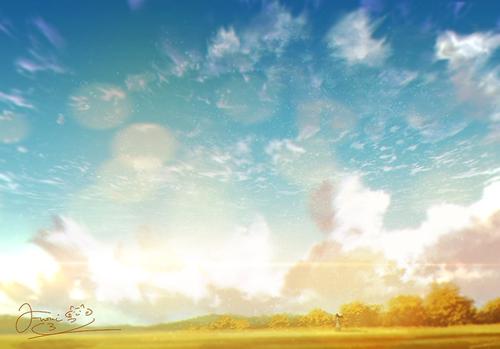
石家庄房产网
Unit 4
A View of Mountains
Jonathan Schell
1. 宁海
旅游景点大全自驾车旅游
On August 9, 1945, the day the atomic bomb was dropped on Nagasaki, Yosuke Yamahata, a photographer serving in the Japanese army, was dispatched to the destroyed city. The hundred or so pictures he took the next day constitute the fullest photographic record of nuclear destruction in existence. Hiroshima, destroyed three days earlier, had largely escaped the camera’s lens in the first day after the bombing. It was therefore left to Yamahata to record, methodically - and, as it happens, with a great and simple artistry – the effects on a human population of a nuclear weapon only hours after it had been used. Some of Yamahata’s pictures show corpses charred in the peculiar way i n which a nuclear fireball chars its victims. They have been burned by light – technically speaking, by the “thermal pulse” - and their bodies are often branded with the patterns of their clothes, whose colors absorb light in different degrees. One photograph shows a horse twisted under the cart it had been pulling. Another shows a heap of something that once had been a human being hanging over a ledge into a ditch. A third shows a girl who has somehow survived unwounded standing in the open mouth of a bomb shelter and smiling an unearthly smile, shocking us with the sight of ordinary life, which otherwise seems to have been left behind for good in the scenes we are witnessing. Stretching into the distance on all sides are fields of rubble dotted with fires, and, in the background, a view of mountains. We can see the mountains because the city is gone. That absence, even more than wreckage, contains the heart of the matter. The true measure of the event lies not in what remains but in all that has disappeared.
2. It took a few seconds for the United States to destroy Nagasaki with the world’s second atomic bomb, but it took fifty years for Yamahata’s pictures of the event to make the journey back from Nagasaki to the United States. They were shown for the first time i
n this country in 1995, at the International Center for Photography in New York. Arriving a half-century late, they are still news. The photographs display the fate of a single city, but their meaning is universal, since, in our age of nuclear arms, what happened to Nagasaki can, in a flash, happen to any city in the world. In the photographs, Nagasaki comes into its own. Nagasaki has always been in the shadow of Hiroshima, as if the human imagination had stumbled to exhaustion in the wreckage of the first ruined city without reaching even the outskirts of the second. Yet the bombing of Nagasaki is in certain respects the fitter symbol of the nuclear danger that still hangs over us. It is proof that, having once used nuclear weapons, we can use them again. It introduces the idea of a series - the series that, with tens of thousands of nuclear weapons remaining in existence, continues to threaten everyone. (The unpredictable, open-ended character of the series is suggested by the fact that the second bomb originally was to be dropped on the city of Kokura, which was spared Nagasaki’s fate only because bad weather protected it from view.) Each picture therefore seemed not so much an image of something that happened a half-century ago as a window cut into the wall of the photogra
phy center showing what soon could easily happen to New York. Wherever the exhibit might travel, moreover, the view of threatened future from these “windows” would be roughly accurate, since, although every intact city is different from every other, all cities that suffer nuclear destruction will look much the same.
3. Yamahata’s pictures afford a glimpse of the end of the world. Yet in our day, when the challenge is not just to apprehend the nuclear peril but to seize a God-given opportunity to dispel it once and for all, we seem to need, in addition, some other picture to counterpoise against ruined Nagasaki - one showing not what we would lose through our failure but what we would gain by our success. What might that picture be, though? How do you show the opposite of the end of the world? Should it be Nagasaki, intact and alive, before the bomb was dropped - or perhaps the spared city of Kokura? Should it be a child, or a mother and child, or perhaps the Earth itself? None seems adequate, for how can we give a definite form to that which can assume infinite forms, namely, the lives of all human beings, now and in the future? Imagination, faced with either the end of the world or its continuation, must remain incomplete. Only action can satisfy.
4. Once, the arrival in the world of new generations took care of itself. Now, they can come into existence only if, through an act of faith and collective will, we ensure their right to exist. Performing that act is the greatest of the responsibilities of the generations now alive. The gift of time is the gift of life, forever, if we know how to receive it.
望远山
乔纳森·谢尔
1 1945年8摩洛哥旅游攻略必去景点
月9怀柔好玩的地方有哪些日,一颗投向长崎。当天,在日军中服役的摄影师山端庸介被派遣到这座已遭毁灭的城市。他第二天拍摄的百来张照片可谓现存最完整的核毁灭威力的影像记录。此前3天也遭遇毁灭的广岛在轰炸的第一天基本没被相机拍摄下来。山端碰巧有条不紊地用伟大而简洁的艺术手法记录下了核武器爆炸后仅仅数小时对人类的影响。山端的部分照片展示了被核火球以其独特的方式烧焦了的尸体。他们是被光烧焦的——用专业术语来说,他们是被“新宾旅游景点大全
热脉冲”烧焦的——尸体通常都烙上了衣服的图案,因为不同的颜吸光程度不同。一张照片拍下了一匹身形扭曲的马儿蜷缩在它拉的大车下面。另一张显示了一堆悬挂在突出物上面伸进沟渠的东西,看得出这也是一个人的遗骸。第3张照片中有个小女孩 承德外八庙游览顺序站在防空洞入口处,不知何故她虽经历劫难却毫发无伤。她脸上露出诡异的笑容,令人震撼。如果不是这张照片,在我们现在见证的场景中,原先的日常生活已一去不返。大片茫茫的废墟瓦砾一直伸向远方,残火零落其间,而这片景象的背景则是绵延的大山。我们能遥望远山,正因为整个城市已化为焦土。城市的灰飞烟灭比断壁残垣更能说明问题的核心本质。这一事件的真正效应不在于城市还剩下什么,而在于消失的一切。
